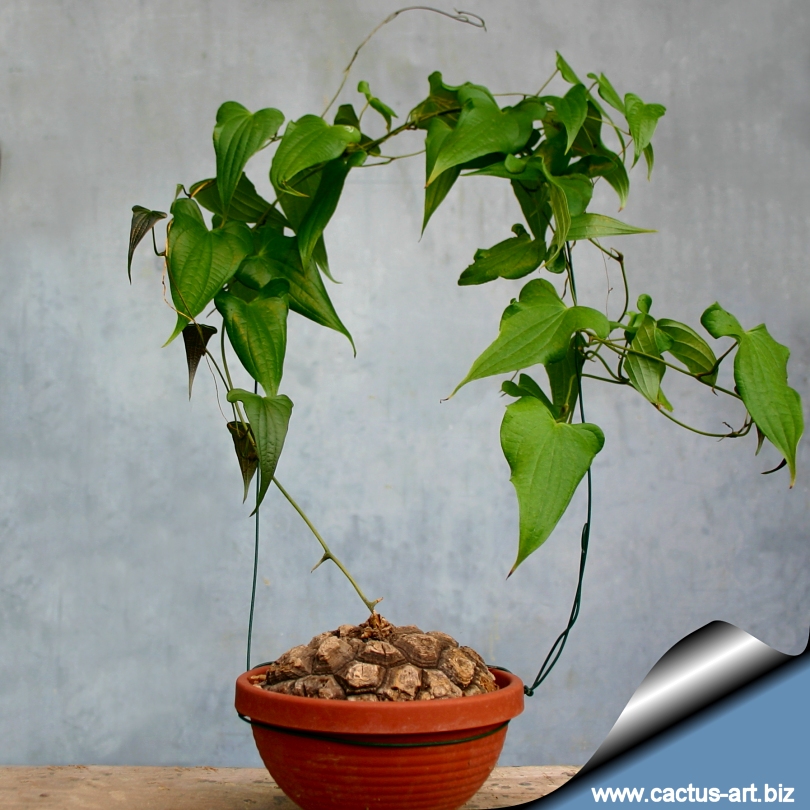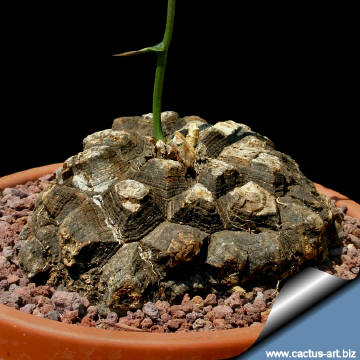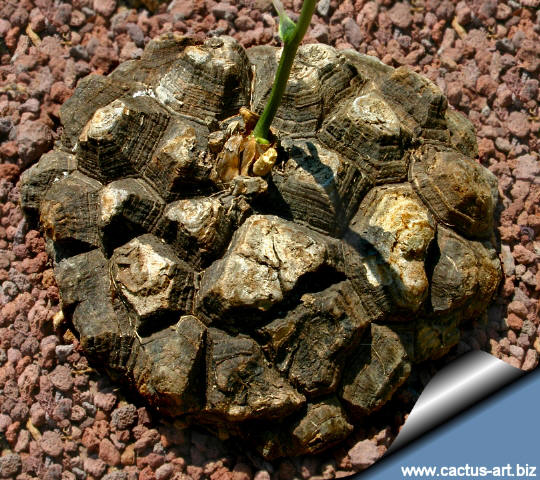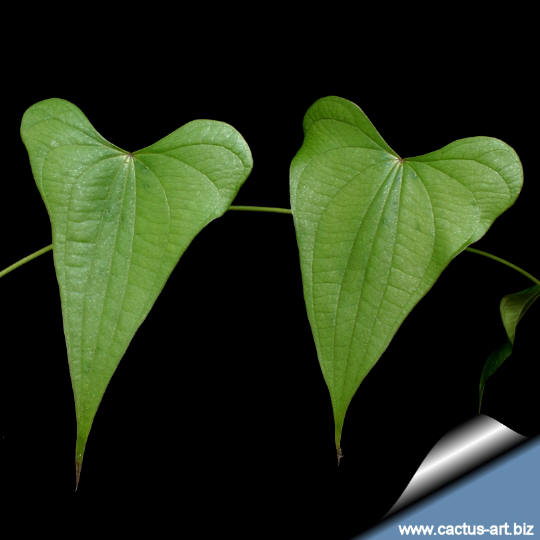|
|
|

The vines grow annually from the caudices of Dioscorea mexicana . The
broadly dome-shaped, plated and fissured caudex may reach 90 m in
diameter and perhaps 30 cm in height. These caudiciform is very slow
growing and can live for centuries. |
|
|

It takes the name Tortoise plant
from the appearance of its large
caudex which grows very slowly. |
Description: Dioscorea
mexicana is a small variety very close in appearance to Testudinaria
elephantidens. It has leafy annual stems with an above-ground persistent
caudices that lie flat on the ground and can make an interesting
container plant.
Caudex: The large and partially exposed tuberous stem, is
woody-looking but succulent within and outer layer of the caudex is
covered with thick greyish-brown bark that aids in moisture retention
and protection against predation also gives the plant great visual
appeal. The caudices is divided into superbly sculptured regular
polygonal plates that become protuberant with age, divided by deep
furrows it can reach 90cm in diameter with a height of nearly 30cm above
ground (but usually donít exceed 50 cm of width) The tubercle-covered
tuber, resembling an elephant's foot or a tortoise shell.
Stems: Testudinaria Mexicana puts out from the top of the caudex
a rather startlingly vigorous vine in late spring that may grow to more
6 m before it dies back in winter. The vines reaches 6 m and grows
rapidly during the growing season but usually dies back in the winter.
Flowers: Inconspicuous, small (up to 2 mm wide) purplish in
clusters.
Blooming season: August
|
|
Cultivation: This species has about the same cultivation
requirements of T. elephantidens, it is very easy to keep, even being
suitable for beginners, as it is robust and can even withstand longer
periods of being dry.
Place the tuber on a large pot with very draining soil, and keep this
slightly moist. Some time after its rest period it will start to form
roots. At this point a little more moisture should added to the soil.
The roots can grow up to 10cm per day. The massive caudex of Dioscorea
mexicana roots only from its sides, not its bottom. Consequently,
someone who raises the caudex in a container to display it better runs
the risk of having a plant that will never make roots and will
eventually dry up and die. The long shoots are suitable for training on
trelliswork and hoops. If the plant grows too vigorously, pinch the top
shoot back to the required length. Prefers a light spot but also does
well in half shade. Sometimes it ignore its proper growing seasons (from
spring to autumn) and keep its vines growing long into its rest period
or send up new vines much earlier than expected. In that case, paying
attention
to the plant and not the calendar is a good idea. Plants even five to
ten years old are extremely nice.
Propagation: Seeds. Sow seeds 5mm deep and keep warm. Sprouts
best in indirect light. The seedlings caudex forms below ground and will
grow much faster if left underground for a couple of years.

 |
|
Advertising
|
|
|
|
|
Family: Dioscoreaceae |
|
Testudinaria mexicana
Scientific name: Discorea
mexicana Scheidweiler 1837
Origin: Mexico, El Salvador, Panama.
Habitat: Semiarid areas.
Common Names include: Tortoise plant.
Etymology: It is called "Testudinaria"
after "Testudo" a genus of tortoise.
Most of the previously described genera
(Testudinaria, Tamus) have been merged into Dioscorea years ago |
Synonyms:
- Dioscorea macrostachya
- Dioscorea villosa
- Dioscorea deamii
- Dioscorea deppei
- Dioscorea tuerckheimii
|
|
|
|

This is one of the most interesting Dioscoreaís species for the depth of
the furrows and knobbyness and geometrical regularity of the caudex.
|
|

|
|